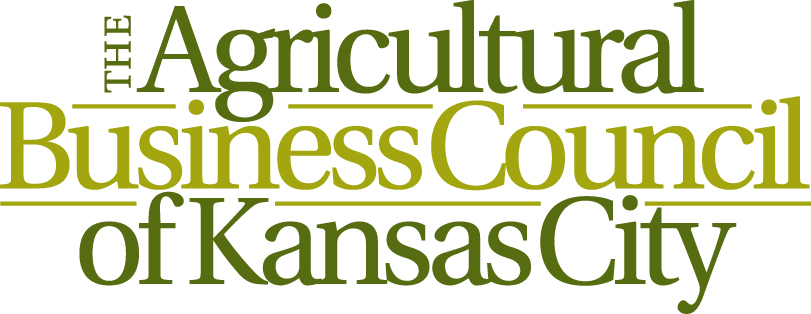Digging Deeper...
/At the Tenth Annual Ag Outlook Forum, hosted by Agri-Pulse Communications and the Agricultural Business Council of Kansas City this month, a spotlight was on a softening agricultural economy and Congress’s struggles to pass a 2025 Farm Bill. “Farm bills have become more of a challenge as tight budgets and increasing national partisanship bleed into the typically bipartisan Congressional agriculture committees, said Zach Helder, Ag Business Council’s Director of Member Services. Despite these challenges, innovation in agricultural production and markets are reason for long-term optimism. Presentations on biofuels and agricultural technology showcased big opportunities ahead for the industry.
By Dennis McLaughlin, McLaughlin Writers LLC. Additional Source: The Future of Aviation, SFA Magazine, Sept. 13, 2024.
Sowing Better Seeds
At the outset of his presentation, Tim Glenn, Executive Vice President, Seed Business Unit, Corteva Agriscience, praised farmers’ business sense. “Farmers are not in it for the lifestyle,” he said. “They are business-oriented, always thinking about growing their business and building surpluses.”
Glenn added that farmers are natural economists who want to sustain their farms as a legacy. Farmers grow and reproduce while other industries, like mining, deplete resources and move on to another location. Farmers are adept at managing resources, making strategic decisions and adapting to market changes. Farmers often have to navigate complex financial landscapes, balancing costs of inputs like seeds and fertilizers with the fluctuating prices of their produce. “This requires a deep understanding of both local and global markets,” Glenn said, “making them quite skilled in economics.”
Demands on farmers are increasing, noted Glenn. World population and income growth continues to drive global agriculture expansion, and farmers continue to face ongoing challenges. Climate variability, resource scarcity, as well as changing pest, disease, and weed pressures are daunting obstacles. Uncertain regulatory and policy demands as well as new consumer expectations regarding sustainability and food safety issues are not making farmers’ lives easier.
Said Glenn, “America needs to get more innovation into the hands of farmers.” Innovation is critical to yield improvements. “Corteva is investing in a full suite of technologies to drive productivity gains,” he said. Farmers need a broad range of solutions for plant breeding, traits, gene editing and crop protection. “We also are researching biologicals and seed applied technologies.”
But there is another area of research and innovation that Glenn’s company is pursuing: Decision Science. While most fields of research focus on producing new knowledge, decision science is concerned with making optimal choices based on available information. Farmers’ ability to balance costs, optimize yields, and invest in new technologies showcases their economic savvy, Glenn said. “It’s a reminder of the critical role they play not just in agriculture, but in the broader economy as well.”
Future Of Biofuels
A panel led by Greg Krissek, CEO Emeritus of Kansas Corn and former Board Chair of the Agricultural Business Council of Kansas City, provided an overview of efforts to reduce GHG emissions across the Midwest and growing the ethanol and agriculture industries.
Lee Blank, CEO, Summit Carbon Solutions, said his company is committed to introducing advanced decarbonization technology. In 2021, it announced a partnership for a major pipeline project with 57 ethanol plants across the Midwest. The pipeline would funnel captured emissions to North Dakota to be permanently and safely sequestered deep underground.
Projects like those of Summit Carbon Solutions are essential to ensuring the long-term viability of the ethanol industry. The marketplace for low-carbon fuel is getting stronger, noted Donnell Rehagen, CEO Clean Fuels Alliance America (CFAA). He said CFAA is committed to driving the biofuels industry to reach its goal of creating demand for six billion gallons of clean biofuel by 2030.
Developing sustainable aviation fuel (SAF) is key to hitting that target. Krissek and the panel explained the technology for producing biofuels is well understood, and processing techniques are steadily advancing and improving. The aviation industry stands at the cusp of a monumental shift as it grapples with its significant carbon footprint. Sustainable aviation fuel (SAF)could play a big role in reducing that footprint, but widespread adoption hinges on advancements in technology, scaling up production, and prioritization from policymakers..
One of the unknowns, at the moment, said Rahagen, is what the regulatory landscape is going to look like. “We need to know what the policies and incentives will be.” On the bright side, CFAA noted, “There are already significant efforts on the federal and state levels to incentivize SAF use, which may facilitate its broader adoption.” The challenge, though, is serious. In 2022, the U.S. consumed approximately 24 billion gallons of jet fuel, while SAF production was still only in the millions of gallons.
Even so, the biofuels industry is optimistic about ramping up production. Says CFAA, “The future of aviation is not just about flying higher or faster, but about flying cleaner.” Rehagen added that biofuel development changes and improves manifestly every five years. The airlines, though, may be a little more circumspect. As panelist Jeff Davidman, Vice President, Government Affairs, Delta Air Lines, said, “We need SAF; in 2023 at Delta, we had 25 million gallons of SAF on hand. But it is two-to-three times more costly to obtain and use.”
SAF is still in its early stages. Jonathan Martin, CFAA’s Director of Economics and Market Analytics, recently was quoted in SAF Magazine (September 13, 2024), saying SAF holds tremendous promise for the aviation industry. With strong demand from airlines, ongoing technological advancements and the role of supportive policies, he said, SAF could play a pivotal role in reducing the carbon footprint of air travel. “The outlook is very positive; the advantage SAF producers have is a willing customer base – the future of aviation is not just about flying higher or faster, but about flying cleaner.”

